Inside the Depot
Introduction
Text-to-speech Audio
Images
Passengers buying tickets at Union Depot (1949)
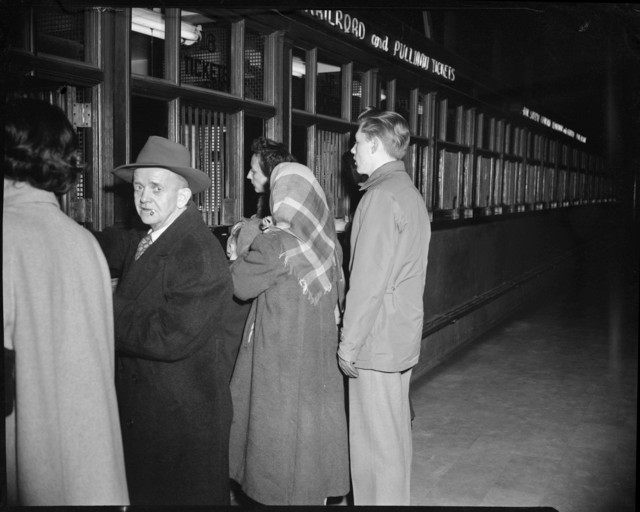
Union Depot emergency hospital (1918)
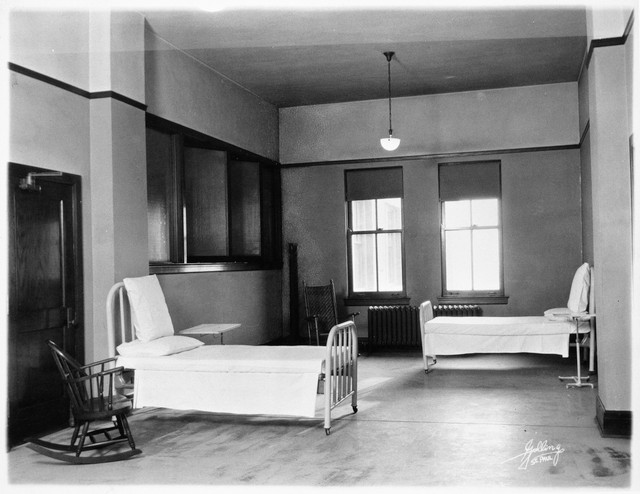
Service men's dormitory at Union Depot (1940)
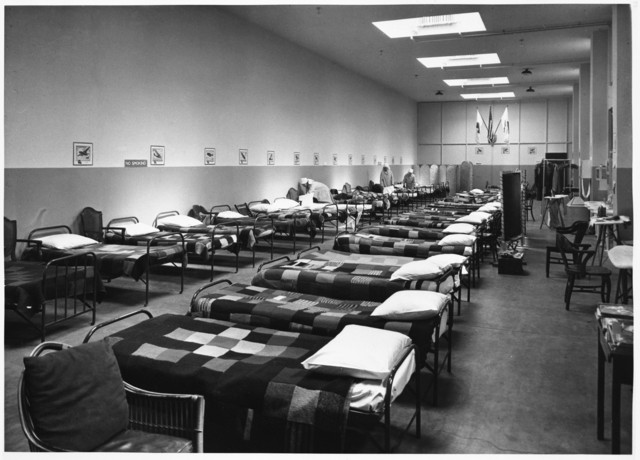
Passengers waiting in the concourse (1949)
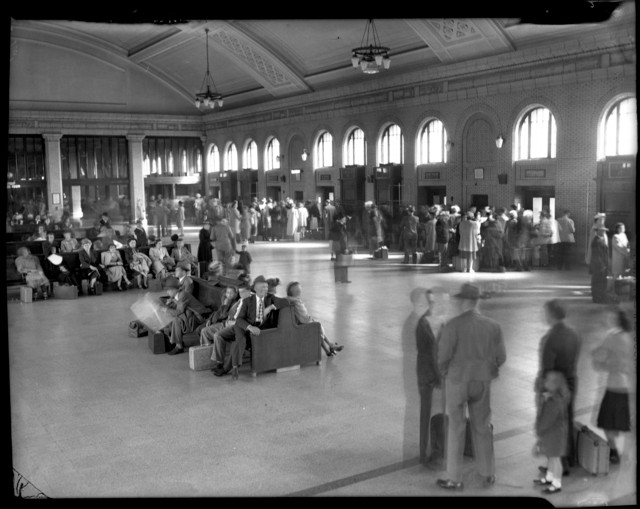
Passengers in line for a departing train (1949)
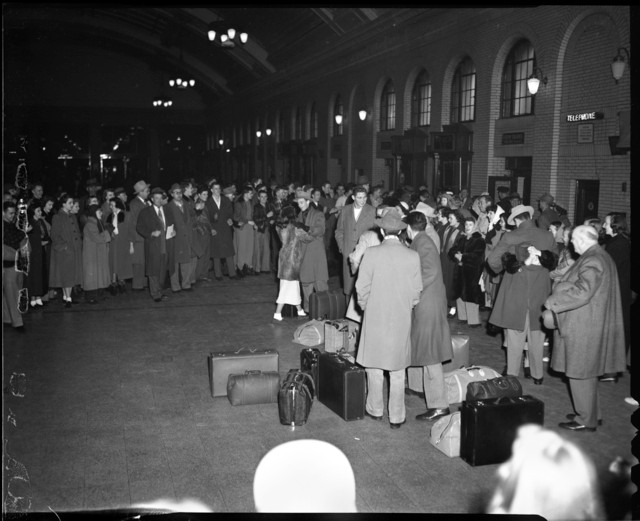
Union Depot Red Cap assisting travelers (1949)
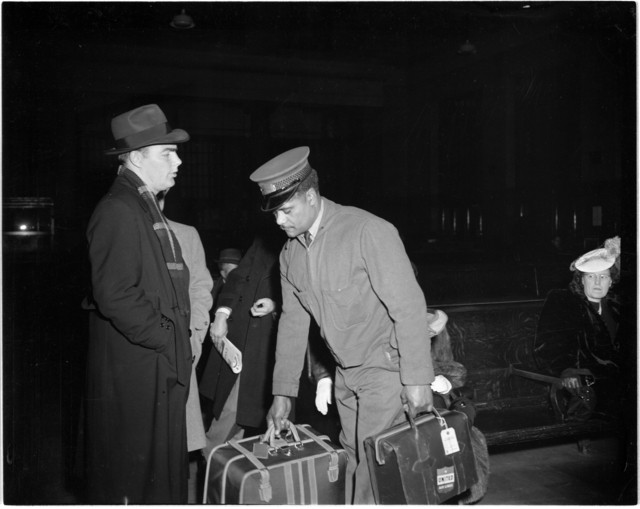
St. Paul Union Depot Red Caps (1952)
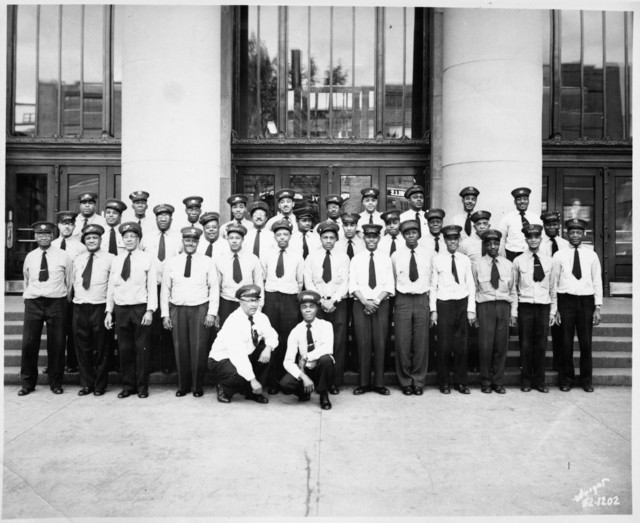
Backstory and Context
Text-to-speech Audio
The building has three sections: the head house, the waiting room, and the concourse. The head house, the front half of the building, is organized around this sky-lit marble and limestone lobby. The concourse is the long section at the back of the building that connects travelers to the rail platform. The waiting room is the small area between the two.
Completed in the mid-1920s, all three areas of the Depot were at their busiest during World War II. If you have come here in 1942, what would you have seen and heard?
- In the head house: The head house would have been a cacophony of people buying tickets and checking bags, sending messages from the telegraph office and using the telephone room. Gentlemen having a haircut at the barber shop and buying newspapers at the newsstand. Travelers picking up necessities at the drug store, a caffeinate pick-me-up at the coffee shop, or lining up for a table in the dining room, and a newsstand. Woozy visitors upstairs to the small emergency hospital above the lobby.
- The Head House Now: Workers restored the ticket windows, plaster and paint to their original 1922 appearance. The paint color, which surprises many visitors, is the result of painstaking process of peeling back and dating numerous layers of paint and identifying the original shade from the 1920s. Today the head house features 33 loft apartments, several office suites, the Bee Line Honey Company, which operates five bee hives on the roof, and Station 81, a restaurant operated by the food justice non-profit Appetite for Change. Station 81 is currently open for takeout.
- The Waiting Room: This was a pass-through space since passengers waited in the concourse in 1942. Notice the restored vaulted tile ceiling cleverly crafted in a herringbone pattern that can withstand the heavy vibrations of steam and diesel engines that once lumbered past the Depot.
- Now: It's a small waiting area illuminated by the "Forever St. Paul" Lite-Brite Mural created by St. Paul artist Ta-Coumba Aiken and built by hundreds of volunteers. Composed of 600,000 lite-brite bulbs, it has been certified the largest lite-brite in the world by the Guinness Book of World Records!
- In The Concourse: If you thought the Concourse was busy, emerging into the concourse on a busy day in 1942 was the next level of hustle and bustle. Throughout the day as many as 20,000 travelers bustled through the concourse. Dozens of Red Caps, unionized African American railway porters, called out greetings and directions, and offered passengers help with luggage. Soldiers shipping out or passing through for military service hiked upstairs to grab a nap in the temporary dormitory or relax in the 12-lane bowling alley in the second floor recreation center. Below, upwards of 250 trains arrived and departed on the 21 tracks and workers unloaded over 40,000 bags of letters and packages from mail cars.
- The Concourse Now: Today the concourse is once again where travelers check track information and arrival and departure times on the restored wooden information cabinets and access the reconstructed train deck and tracks. It also serves as an event space that features the original tile frieze representing a history of American transportation and more recent art installations.
Sources
Corona, Marcella. Red Caps celebrated at St. Paul’s Union Depot, Pioneer Press. July 9th 2013. Accessed August 6th 2020. https://www.twincities.com/2013/07/09/red-caps-celebrated-at-st-pauls-union-depot/.
Diers, John. St. Paul Union Depot, MNopedia. November 8th 2017. Accessed August 6th 2020. https://www.mnopedia.org/structure/st-paul-union-depot.
Nunez, Jennifer. St. Paul Union Depot restoration completed, RT&S. December 10th 2020. Accessed August 6th 2020. https://www.rtands.com/track-maintenance/off-track-A/st-paul-union-depot-restoration-completed/.
Thompson, David A. The Mail is Coming: 100 Years of the Railway Post Office in Minnesota, Minnesota History Magazine. Accessed August 6th 2020. http://collections.mnhs.org/MNHistoryMagazine/articles/64/v64i05p206-216.pdf.
Public Art, Union Depot. Accessed August 6th 2020. https://www.uniondepot.org/about/public-art/.
Minnesota Historical Society
Minnesota Historical Society
Minnesota Historical Society
Minnesota Historical Society
Minnesota Historical Society
Minnesota Historical Society
Minnesota Historical Society
